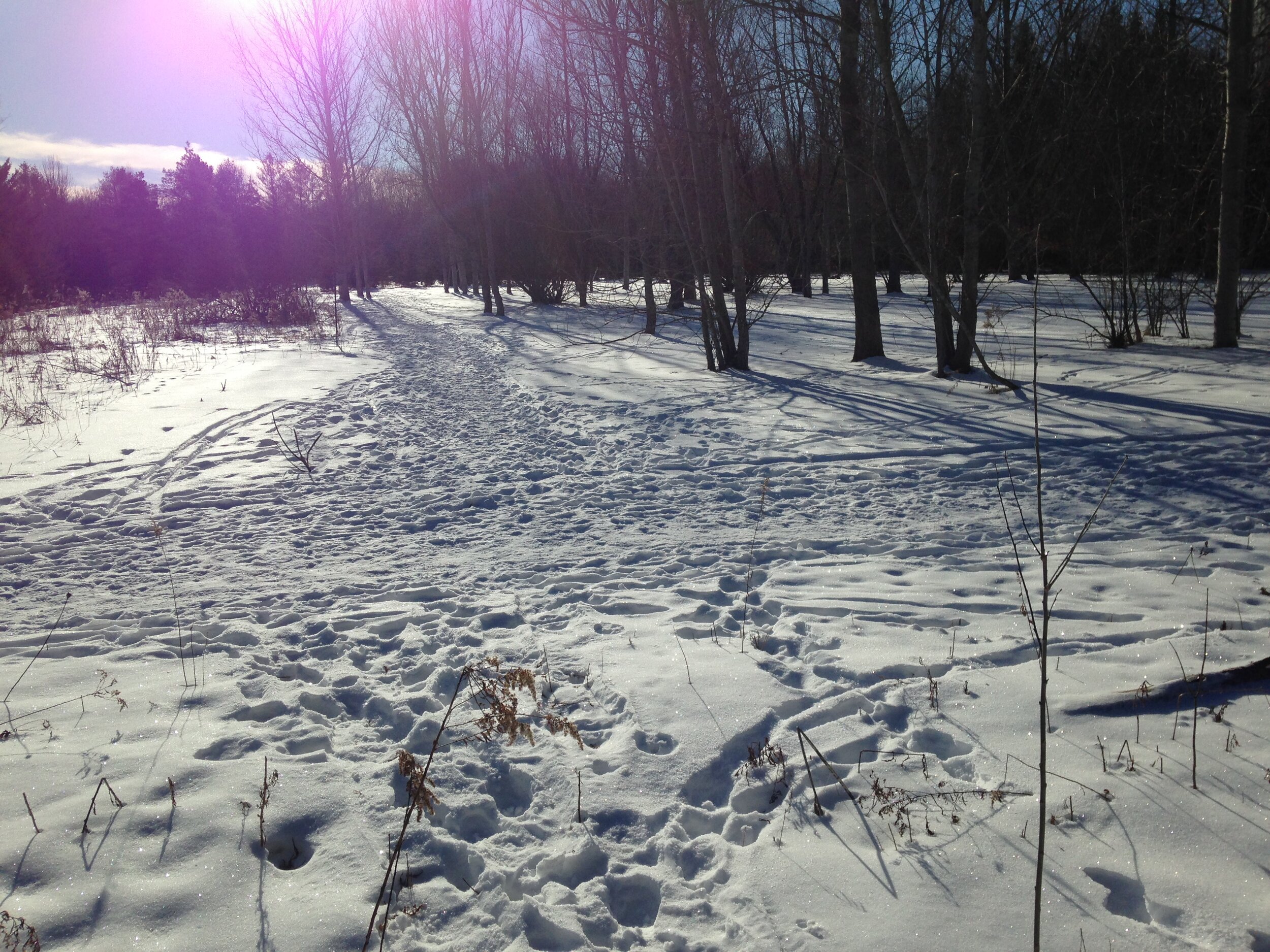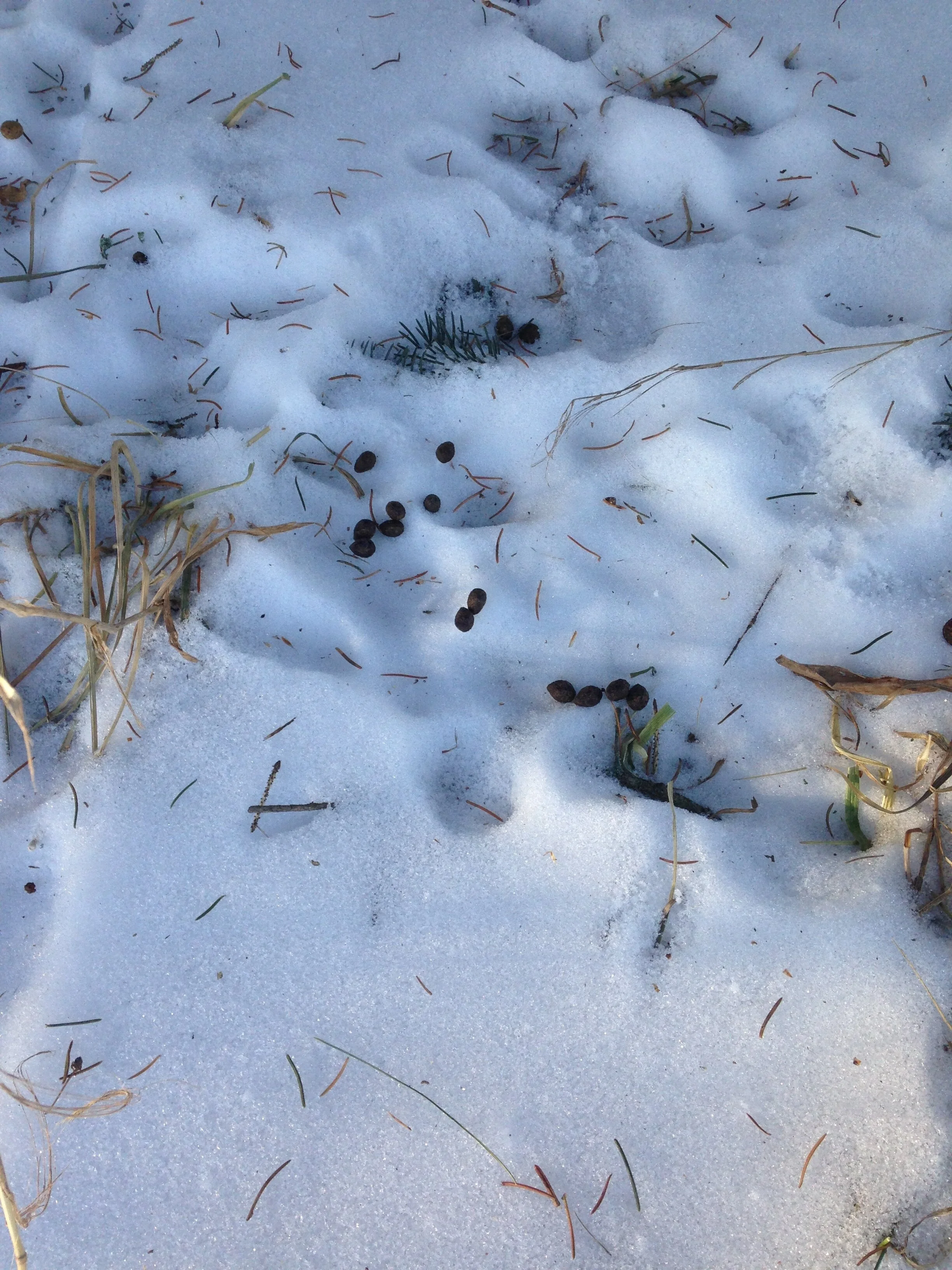Tracking through the Poplars
Date: Feb 3, 2021 Temp: -6°C Wind direction: Northwest Moon phase: Waning quater
Poplar site
I was out at the University of Guelph Arboretum tracking, looking high and low along the edges of small area bordered by White Pines (Pinus strobus), Eastern White Cedars (Thuja occidentalis), and within a small Poplar (Populus sp.) grove. Around the periphery of the grove, there were human and domestic dog trails boxing in the Poplars with only a little traffic weaving between them.
I skirted along the edges, ducking under the Pines looking for signs of whomever might be living in the space, or at least passing through looking for food.
Eastern Cottontail Rabbit scat and sign of feeding on grasses.
I had noticed Humans (Homo sapiens), Domestic Dogs (Canis lupus familiaris), Dark-Eyed Juncos (Junco hyemalis), and Black-Capped Chickadees (Poecile atricapilus) as I was walking into the site. The Juncos and Chickadees were feeding on the ground underneath a row of Pines and had scattered as I walked closer evading my camera. But as I walked up I also noticed some Eastern Cottontail Rabbit (Sylvilagus floridanus) tracks and scat. It looked like the Rabbits had been hanging out under the Spruces (Picea sp.) for a few reasons. They were likely sheltering from the wind, hiding away from potential predators, and also foraging where the large coniferous trees had blocked some of the snow from falling below, making some still green forbs and grasses available for the Rabbits without much work on their behalf. In return, they left their scat, which will eventually break down and decompose back into the land where they fed, cycling nutrients for the future Spruces and future plants to take up once again.
Close by there were some Meadow Vole (Microtus pennsylvanicus) tracks emerging from below the snow where they spend lots of their time in the winter. Much has been written about the subnivean zone so I won’t go over it all again here, but I will add that it is likely safer, and warmer for the Meadow Voles to be under the snow than on top of it. Many predators are just waiting to catch sight, smell or sound of a Vole. Just to make the point a little clearer, there was a Red Fox (Vulpes vulpes) trail just on the other side of the grove, hugging the edge of Cedar trees examining holes and mounds, and scent marking as they went.
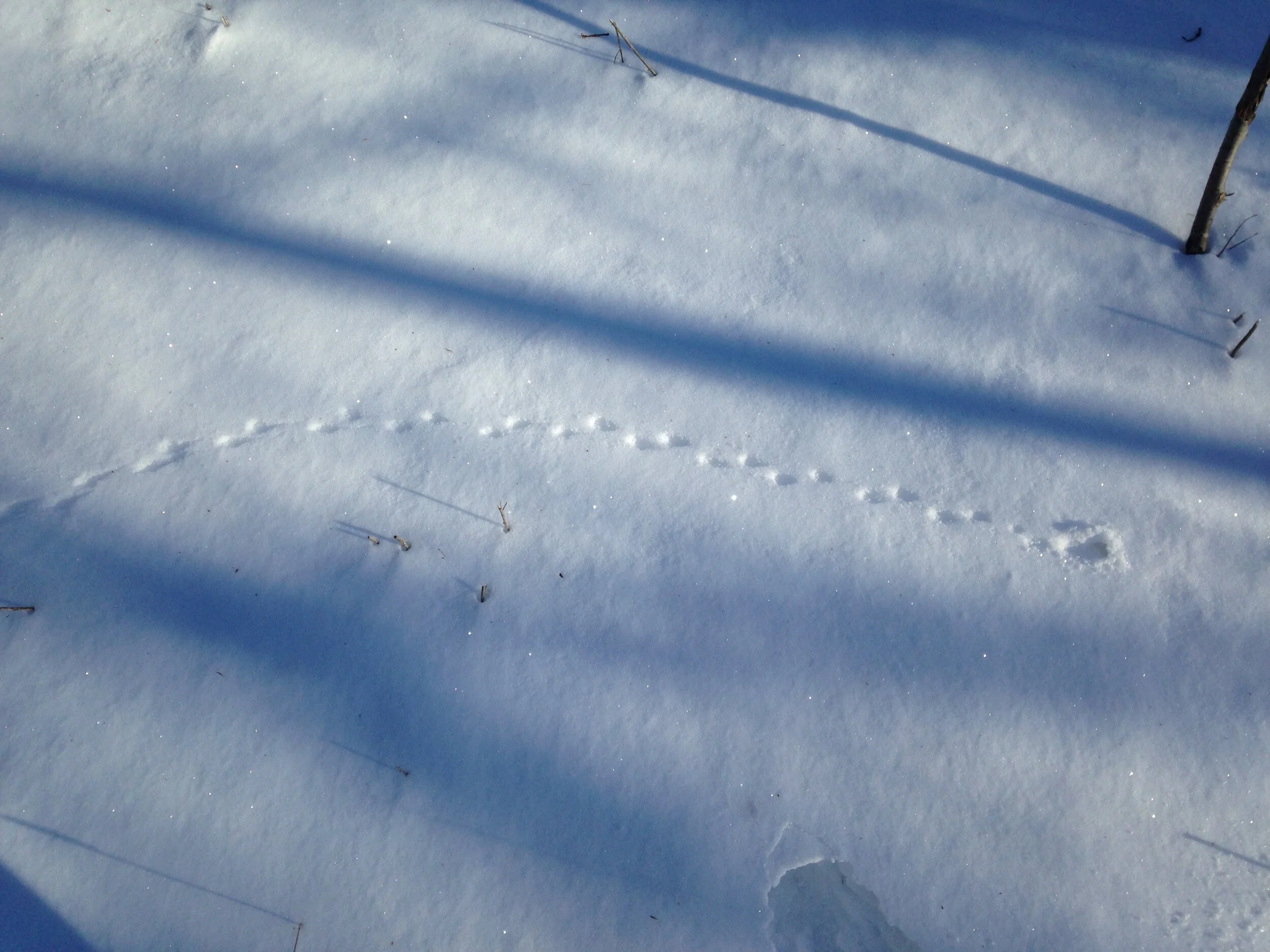

More Vole trails littered the site bringing me flashes of Spring when the tunnels through the short grasses will be more visible.
As I walked I encountered a Grey Squirrel (Sciurus carolinensis) bounding trail headed towards the tall Spruces on the Western side of the site, and seemingly coming from investigations around the Poplars. I backtracked the Squirrel trail and when I got to the Poplars I noticed sign of Gypsy Moth (Lymantria dispar) infestations.


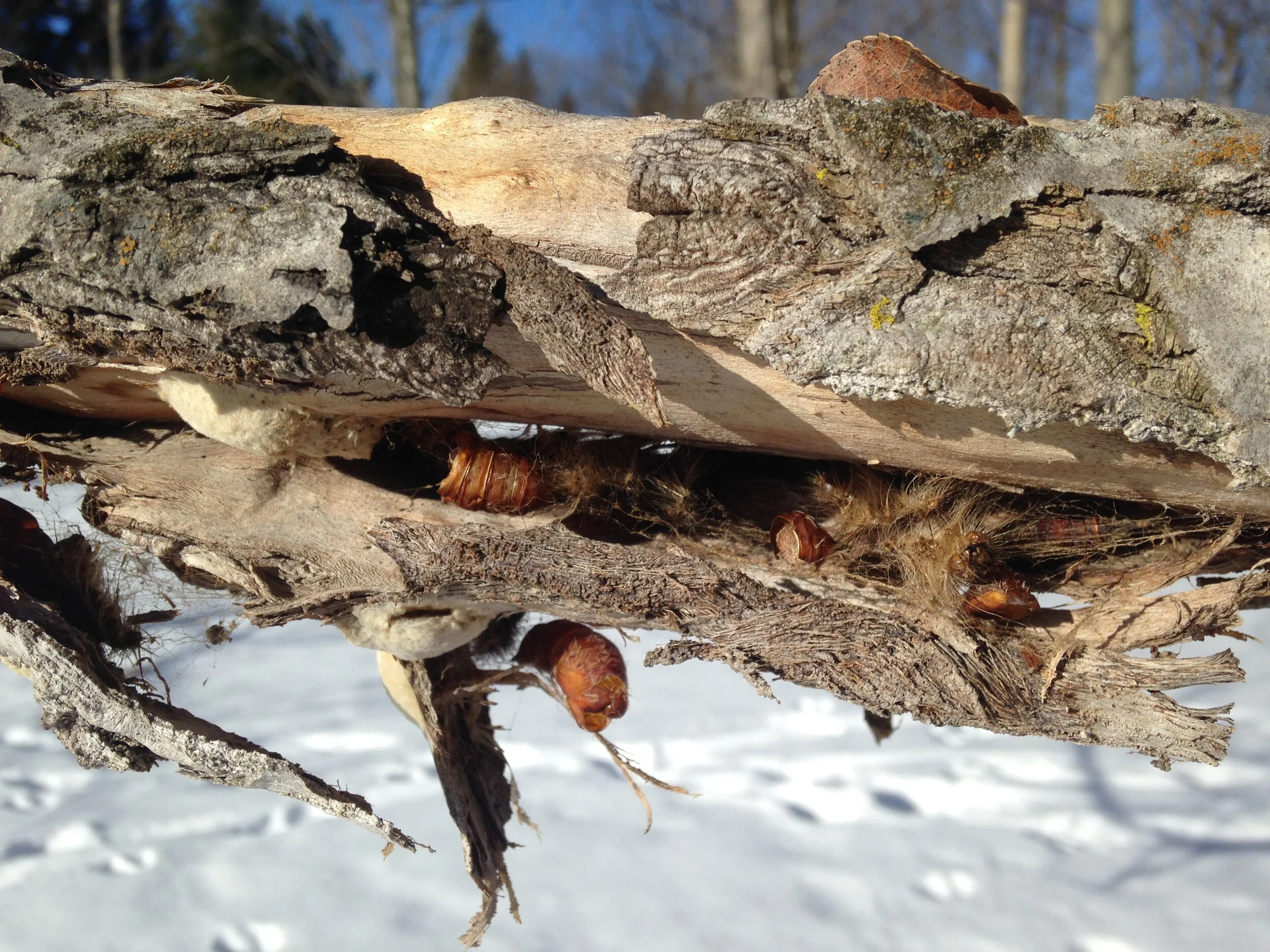

As I looked up from photographing the Gypsy Moth sign, I tried to tell if the Poplars were in good health or not. I know this past year was a great year for Gypsy Moths, with booming numbers and lots of stories of defoliated trees from around the Great Lakes bioregion, but luckily a single year of defoliation shouldn’t be enough to kill a tree, just set it back a little.
A diagnostic inspection is kind of hard for me, not-an-arborist, in the middle of Winter. Some trees looked in bad condition, branches fallen, bark peeling in big sections, a stump on its sides. It was a bad scene for some of them. I walked between the trees and examined a few more. Most of the trees in the grove seemed in good shape, and were showing big thick sticky Poplar buds with bark that appeared greenish and alive.
While wandering from tree to tree, looking up into the high branches I noticed one with radiant patches of cambium where the outer bark was missing. I looked down and noticed some jelly-bean shaped scat at the base of the tree and my guess was confirmed.
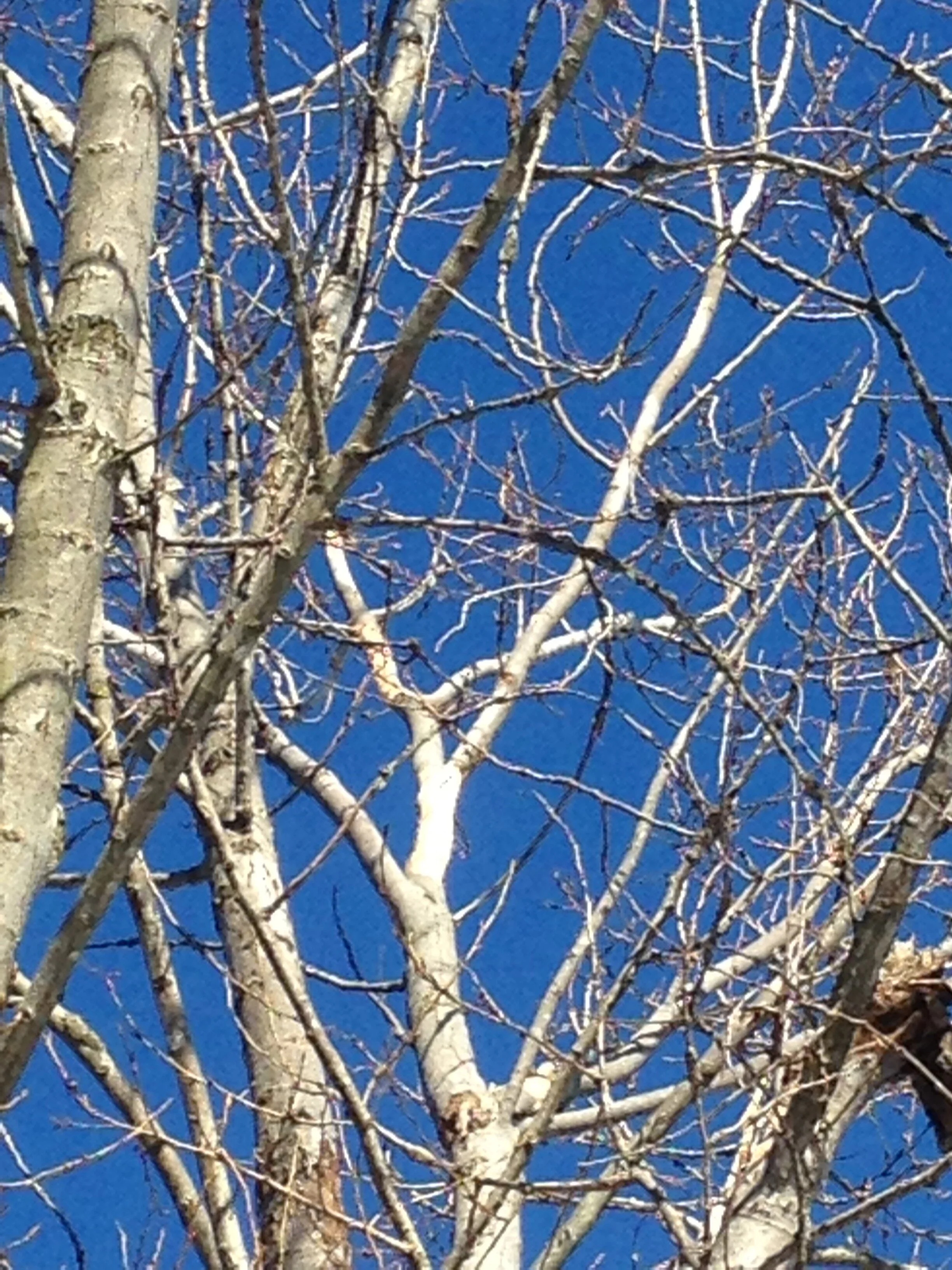
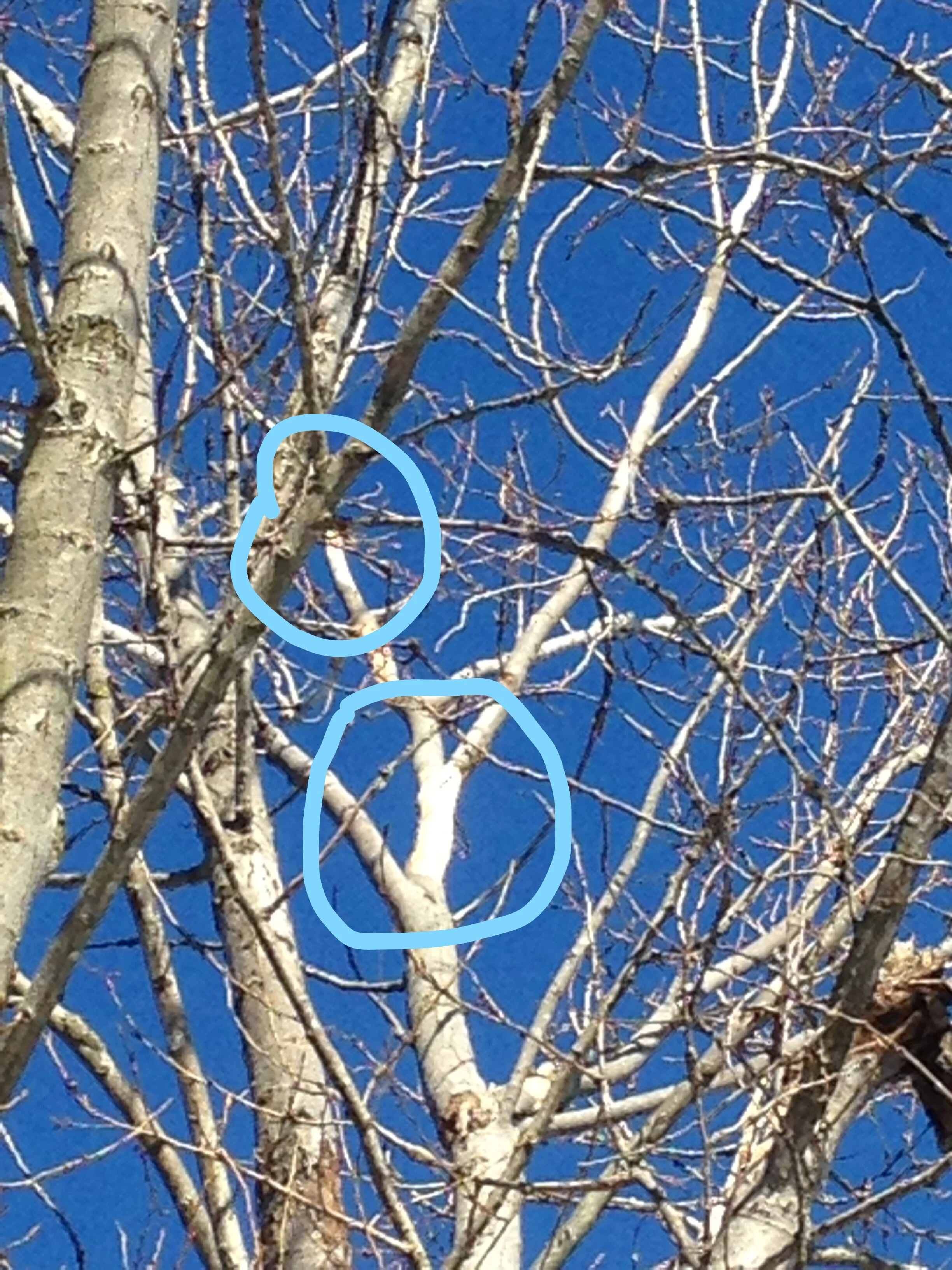

It was Porcupine (Erethizon dorsatum) sign, and they looked pretty fresh. I noticed the tracks leading to and from the tree I was standing under and began following them. They seemed to meander towards the Northeast but veered off on the the main trail which was a big mess of Human and Dog tracks. I walked back to the Poplar and began following again, jumping over older trails as I tried to stay on the freshest looking one. When again I got to the Human trails I decided to just follow the path and imagine seeing the world through the Porcupine lens : Where would be good cover if a Dog was coming? Which trees would be good for browsing? Where could I sleep soundly throughout the days but still get to the Poplar tree in my lumbering slow gait? As I walked I noticed a small patch of Pines beside the trail and made my way towards them. As I stepped off the Human trail, I noticed that the Porcupine trail reappeared and also made it’s way into the Pines. I was stoked.
Very slowly, and as quietly as a clumsy person can be, I bent into the small patch of Spruces and Pines. There were a couple of Porcupine trails leading to and fro in this sheltered spot. I started looking at the base of all the trees, looking for a mass of scat and fallen twigs. Towards the far edge of the patch there was a big brown stain on the snow right at the base of one of the trees. I slid between some of the low branches and made my way. When I looked up it took my eyes a second to register, but there, just above midway up the tree, balancing midway out from the trunk on two seemingly small branches, were two Porcupines.
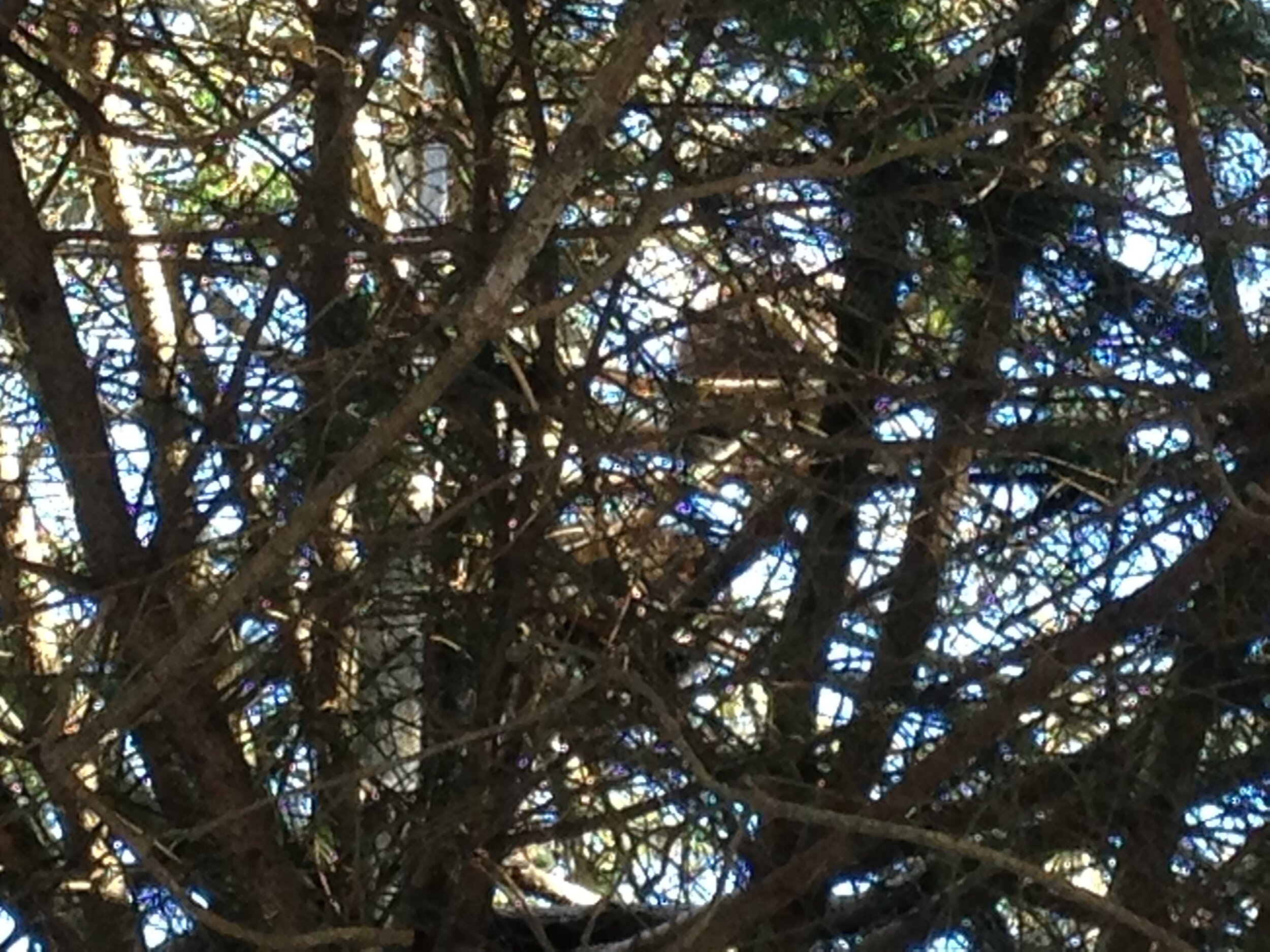

I took a very quick photo and left the Porkys to sleep. I didn’t want to disturb them beyond what I had already by coming into the conifer stand. I retreated to the sun and decided to make my way home. I was cold and the tracking mission felt like a win.

